Update 2023.0703: Because this remains one of the most commonly visited pages on my site, I have updated it to the modern style. I hope it’s more legible than the original.
Update 2012.0822: In 2006 I wrote an article titled “25 books by William Sleator”, covering the bulk of Sleator’s oeuvre up to that point. It wound up becoming one of the most visited pages on my site, and I wondered whether I ought to keep it continually updated… but then I thought, nah, I’ll update it in batches. Maybe every five or ten books, say.
As it turned out, Sleator died in 2011, having released three books since I posted my article. Unless he’s got a bunch more packed away in a trunk somewhere, this will be the only update. (I actually wouldn’t be all that surprised if he did have such a trunk somewhere. Hell, given how prolific he was, I wouldn’t be all that surprised if he’d lost a manuscript or two under the sofa.)
So, first, the article as originally presented in 2006…
A few months ago, in my article on the movie Primer, I wrote:
I imagine that Carruth got a pretty good return on his $7000 investment. I hope William Sleator got a cut. Primer is highly reminiscent of The Green Futures of Tycho, Singularity, The Boy Who Reversed Himself, The Duplicate, and Strange Attractors—and those are only the ones I read before losing track of Sleator in the early 1990s. Hmmm. I see here in Wikipedia that he’s since written ten more. One of them is called The Boxes. The one after that is called Rewind. Crikey, this bibliography is practically a Primer plot summary.
After writing this, I decided to read the ten new ones. Then I figured I’d go ahead and read the older books of Sleator’s that I hadn't read yet, just for the sake of completism. The only ones I skipped were the picture books (though I did flip through Once, Said Darlene) and the non-fiction book on psychological conditioning (though I did read it fifteen years ago). So what does that leave?
For the most part, it leaves YA SF: science fiction for young adults. “Young adults” is kind of a misnomer, of course; the target audience for these books is in junior high. I mean, yes, junior high kids are adults to the extent that they can get each other pregnant, but their books are still shelved in the children’s section of most libraries. This has made checking out Sleator’s oeuvre slightly embarrassing. Though not quite as embarrassing as going to the library at age twenty and being told that I had a large fine due because I hadn’t returned my copy of Are You There, God? It’s Me, Margaret. (I had too!)
I first encountered William Sleator’s work in the mid-1980s, when I got a copy of The Green Futures of Tycho from Little Professor Books across from the Supercuts in, hmm, I think Placentia? I still have my original, now quite battered copy—I think that of my current collection it may be the book I’ve owned the longest. (The prize for reading material in general on that score goes to my equally battered copy of Iron Man #174.) I’ll talk about Tycho some more below, but for now I’ll just say that while I recognize that it’s not really anything special, it was a pretty important building block in my own development as a writer. I liked it enough to check out some more of Sleator’s work, some of which turned out to be better than Tycho and indeed good enough to make me think, over twenty years later, “Hey, maybe I’ll read all of this guy’s books.”
(Specifically, after I read Tycho, I checked House of Stairs out of my junior high library—it was in the Special Permission section, next to a book called Rape. Interstellar Pig I got out of the Canyon Hills Library. Fingers I happened to find a copy of in Mrs. Giroux’s classroom. And those are the Sleator books I read at the proper age. Everything else I read either in college or this summer.)
Sleator’s books are not very impressive at first glance. The prose is strictly functional, not lyrical or witty. Characterization is fairly minimal. But here’s the thing. Scott McCloud wrote about how there are six levels to a work of art—idea, form, idiom, structure, craft, and surface—and also about how the more one delves into an art form, the less surface matters. This is borne out by my own experience. For instance, when I was fifteen and getting into the Beatles, my favorite songs tended to be the ones that, right on first listen, sounded wild and different: “Revolution 9”, “Because”, “Tomorrow Never Knows”, and the like. I couldn’t understand why critics paid attention to the old obsolete stuff from 1964… until years later, when I started writing songs myself and marveled at what the Beatles were able to create without sharply deviating from the strictures of the standard pop song. And while YA SF is a much narrower and less powerful type of art than rock music, Sleator too is a master of his idiom. He may not be much of an experimenter where form is concerned, and his surface may not be very glitzy, but his stories are almost always extremely solid.
In fact, Sleator’s stylelessness achieves much the same effect as Scott McCloud’s “styleless” art. Or, to make another analogy, by taking basic SF tropes and building small YA novels around them in a clean, simple style, Sleator seems to me to be doing something similar to restaurants like Craft: preparing each ingredient well enough to showcase it without adornment. These aren’t sprawling novels; they’re just the right size to make awesome movies. Or, rather, they’re just the right size to make movies, and by keeping things spare, he leaves room for people like me to imagine all the great little character touches we’d add to make them awesome ones.
But enough generalities. Let’s get to specifics. [For those not familiar with the scale I use on this site, ratings range from 0 to 24, as follows:
|
24 23 22 21 20 19 18 17 16 |
15 14 13 12 11 10 |
9 8 7 6 5 4 |
3 2 1 |
0 |
||||||||||||||||||||
An asymmetrical 0 to 24 scale may not be intuitive, I realize. But as a rule of thumb: a double-digit score means I liked it without any serious reservations, while a single-digit score means “maybe not so much”.]
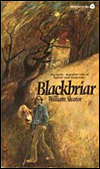 |
4
•
Blackbriar, 1972 trope: haunted house An orphaned boy named Danny and his guardian, a school secretary, move from London to a cottage out in the middle of nowhere that all the locals seem to be afraid of. There is some mystery about a strange wooden doll and some chanting and a list of names in the cellar that ultimately leads to the boy trying to save his guardian’s cat from Satanists. Though Blackbriar is not really an auspicious debut—Sleator had already published a picture book called The Angry Moon, but this was his first novel—quite a few of the themes that would go on to dominate Sleator’s work are already on display here. You’ve got missing parents: a hallmark of nearly all children’s stories, to be sure, but we’ll see it crop up over and over. Sleator’s parents, even when they are around, tend to be ineffectual and shallow. You’ve got a bad guardian: the secretary isn’t nasty and crass the way some of Sleator’s later guardians are, but she actively chases off all of Danny’s potential friends so she can have all his attention. And then you’ve got a remarkably sexless romance subplot. Sleator’s characters are all exasperatingly reserved. I can think of only one place in his entire body of work where anyone dares to talk about love, whether it be between family members or potential sweethearts. In Blackbriar, Danny meets a girl named Lark (great evocative name, but she turns out to be kind of a cipher) and they actually kiss at one point. Having read Sleator’s later work, I was shocked. But the kiss is never mentioned again, nor is there any follow-up. |
 |
3
•
Run, 1973 trope: the calls are coming from inside the house This story is basically warmed-over Denny O’Neil stuff. A girl left home alone (missing parents!) at an isolated cottage meets two boys who are on a biking trip and then have to stay over because of a sudden thunderstorm. There is no hanky-panky (sexless!) but a small mystery does develop when the radio and TV go missing and one of the boys starts acting weird. The kids also think they see some sort of intruder, both outside and inside the house. Sleator wasn’t an SF writer yet, so it turns out that the explanation is that a junkie has been stealing stuff to feed his habit. There is some discussion of whether they should turn him into the corrupt local police or help him hide from them, along with ruminations about who’s really to blame for the way things have turned out. The problem is that these three kids are no fun to spend time with, and the protagonist is particularly annoying. This book was the hardest of the 25 to track down, and there’s a pretty good reason for that. |
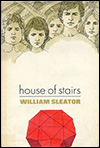 |
12
•
House of Stairs, 1974 trope: conditioning If you’ve heard of one William Sleator book, this is the one. It’s a classic. It also holds a special place in my heart because it came up in conversation during the brief window after I had decided that I had a crush on Jennifer but before I had told her so, and so I told her I’d send her a copy (not mentioning that it was my only copy) and, after getting her address, proceeded to do so. It was my first gift to her (and yes, it would be hard to find a less romantic one, but hey). Eventually I moved in with her and so I never bought a replacement copy because, hey, it was still in the house, right? But when we split up, I didn’t take it, because I had inscribed it to her. I should probably stop talking about this. So. House of Stairs. In a dystopian near future in which the air has become unfit to breathe, the culture has turned disturbingly prudish, and the government has become a police state, five orphans (missing parents!) are taken to a sort of bio-dome full of nothing but white staircases and a machine that dispenses food. But it doesn’t do so on command. When the machine’s light flashes, they have to dance for it in order to receive their food. And they never know when the light will flash. But it seems to flash more often when they are cruel to each other. House of Stairs is Sleator’s first SF book, not just because it’s set in what was then the future but also because it’s a story organized around a scientific concept rather than just a story about a house Sleator happened to be living in. Sleator was big enough on behavior modification through operant conditioning that he co-wrote a non-fiction book about it, making it a natural subject for his initial foray into science fiction. But while with House of Stairs Sleator had located the genre he would be writing in for decades, it is still quite unlike his subsequent books in a few ways. For one, it’s largely a character piece, a sort of teenage No Exit in which hell is the four other kids. One of them, Blossom, is a character Sleator would go on to use over and over again: she’s one-dimensional, fat, ugly, and nasty with no redeeming qualities. Lola’s a tough girl of a type Sleator would never use again, partly because she didn’t really fit into his later stories but also because she’s pretty firmly a creature of the 1970s. I can practically smell her unwashed hair. Then there’s the third girl, the pretty one, Abigail. Abigail gets involved with one of the two boys — Oliver, the hunky one. Oliver is the alpha-male extrovert of the group, but since in the outside world boys have little or no contact with girls, he’s intimidated around a pretty one. The same is true for Abigail: in the outside world she’s had little or contact with boys, and so she’s very shy around him. But ultimately they find themselves slipping off to faraway staircases, where they… kiss. And they’re both really into it. But every time, Oliver finds that at some point he’s done, and is overcome with shame and revulsion, which in turn makes Abigail feel like a skank. Given these reactions, it is very strange that they are always described as kissing and not as having sex. I wonder whether it’s because Sleator wanted to reinforce the idea that their society was so prudish that a couple of kisses made them feel sexually active, or whether the publisher would only go so far (though by the end of the book the kids are urinating on each other, so I dunno), or whether perhaps Sleator just didn’t feel comfortable going that far. And then there’s Peter, the first kid we meet. I can’t really call him the protagonist, because he’s by far the most passive character in the book, spending most of his time catatonic. But we do get to sit in on his daydreams, and while Sleator never uses the word, it turns out that Peter is obviously gay. And remember how I said I could only think of one place in Sleator’s body of work where love is explicitly mentioned? It’s Peter talking about his friend Jasper back at the orphanage. It’s interesting that Sleator would take the bold step of making a gay boy the initial focal character of a YA book in 1974 and then never really touch the theme again. House of Stairs is also the only Sleator book with profanity in it. Put it all together and it looks like here he was writing for an older audience, actual high school kids. Which makes it all the more interesting that he would next publish: |
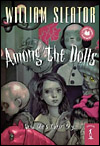 |
8
•
Among the Dolls, 1975 trope: nested worlds House of Stairs appears to be aimed at an audience ever so slightly older than Sleator’s eventual demographic; Among the Dolls is aimed younger. This isn’t YA. This is a children’s book. But it’s actually not entirely dissimilar from House of Stairs, and is possibly Sleator’s most effective message book. Vicky is a ten-year-old girl who is disappointed to receive a large antique dollhouse for her birthday. She plays with the dolls, but has them bicker and mistreat each other. Meanwhile, her own family environment becomes worse and worse, with her parents having terrible arguments that she goes on to reenact with her dolls. And then one day she suddenly finds herself in the dollhouse, surrounded by life-size versions of the wooden, plastic, and cloth dolls, and they’re plenty nasty. They also have a dollhouse of their own, of a modern house… The dolls keep telling Vicky that “we are what you made us”, and she finds that she’s stuck in a loop: her home life sucks, so she takes it out on the dolls, who are hurt by her treatment of them and lash out at their dolls, who happen to be Vicky and her parents, and around and around. The implications about child abuse—and the cycle of violence in the Middle East, for that matter—are clear but, commendably, not spelled out. |
 |
8
•
Into the Dream, 1979 trope: telepathy Into the Dream is also aimed at younger kids, and like Among the Dolls it has illustrations. And the initial setup—two twelve-year-olds with nothing in common start having the same dream every night—isn’t initially an SF concept. But then we learn that the reason the two kids have the same dream every night is that they were given telepathic powers by a UFO, and that the dream is a message from someone even more strongly affected (exactly who turns out to be a neat twist). So it becomes clear that this isn’t going to be magical realism. Sleator handles the telepathy really well, though. This isn’t the kind of telepathy that’s just a magical walkie-talkie; this is the kind of telepathy that is love. First Paul and Francine discover that they’re having the same dream every night… then they find that every now and again they just happen to know things about each other without being told… next they’re replying out loud to each other’s unspoken thoughts when they argue… and one day they don’t need to speak anymore. It’s thrillingly romantic. And Sleator capitalizes on this in the climax by… having Francine give Paul a hug. Okay, they’re twelve, but still, where my smoochies at? |
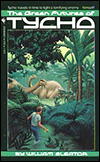 |
11
•
The Green Futures of Tycho, 1981 trope: time travel And this is where I came in. Tycho Tithonus, age 11, is the youngest of four children. His parents named his eldest brother Ludwig, and Ludwig turned out to be a music prodigy. They named his sister Tamara, and she became a gifted dancer. They named his other brother Leonardo, and he is an astounding artist. And then there’s Tycho. He isn’t into astronomy. He isn’t into anything, really, not the way his siblings are: his interests come and go. So the rest of his family hates him. One day, digging around in the yard, he finds a small metal egg. After a few experiments, he discovers that it’s a time machine. He jumps ahead five years and his older self explains to him how it works. And then he goes back to the past and scares the hell out of his older siblings as they are tormenting his six-year-old self. When he returns to the present, his siblings are different. Ludwig’s paranoid, Tamara’s cripplingly shy, and Leonardo, always overweight, is obese. Now, remember, this was the first Sleator book I’d ever read, and I was younger than Tycho when I did so. And so this was the first time travel book I’d ever read based on the simple premise that changing the past changes the present. Tycho starts to visit the far-flung future of April, 2001. The first time he visits, he finds that his future self is a total loser. Boo. The second time, his future self is a criminal. Yecch. Ludwig starts to get suspicious about what Tycho’s up to and Tycho pulls some tricks to scare him off. Then he travels into the future again, and this time his future self is a total psychopath. And Tycho begins to realize that maybe this isn’t coincidence—that maybe the longer he holds onto the time machine, which is itself changing and becoming more powerful, the worse a person he becomes… The Green Futures of Tycho is not great literature, but it’s a much deeper take on time travel than “we must go to the past and bring back Blackbeard’s treasure!” and when I was a kid it rocked my stripey little socks. The family dynamics also made quite an impression on me. Though the Tithonus parents aren’t missing, exactly, they are flaky psychologists who insist on being called “Bobby” and “Judy” and leave their children to their own devices. (Hmmm, a squadron of gifted siblings left to fend for themselves… where have I read that before?) It didn’t hurt that Sleator based the Tithonus kids on his own family, and that by sheer coincidence, both Sleator and I are the eldest of boy-girl-boy-boy siblings. (Sleator’s borrowing went further. The eldest Tithonus, Ludwig, is a musician, and he often plays for Tamara, the dancer; at the time he wrote Tycho, Sleator was a pianist for a ballet company. Oh, and Sleator’s youngest brother in real life is named Tycho Sleator.) There’s even more to this book than I’m noting here—I haven’t really talked about how this is probably the first book I ever read that revolved around one character manipulating others, or about the secret of the egg, or about the color motif—but anyone who knows me and reads this book will start to see all sorts of elements that I drew on for inspiration in writing my own stuff later on. |
 |
5
•
Fingers, 1983 trope: reincarnation Did I mention that Sleator was a pianist? Well, here we go again. Sam and Humphrey are half-siblings. Half-witted Humphrey is a piano prodigy whose career seems to be over now that he’s hit puberty. So the family cooks up a scheme to get him some more bookings: Sam will make up some music, and the family will tell the media that Humphrey wrote it while in a trance, channeling the spirit of a long-dead composer. This is not one of Sleator’s best. Too much like the shipping clerk who says, “Hey, you know what would make a great book? A thriller about shipping clerks!” It is notable, though, for being Sleator’s first book written in the first person, which he would go on to use most of the time thereafter. |
 |
14
•
Interstellar Pig, 1984 trope: aliens If you know one William Sleator book, and it’s not House of Stairs, it’s this one. And this one’s even better than House of Stairs. It’s part of the YA canon and deservedly so. Barney is staying with his shallow, preoccupied parents—when Sleator has the parents stick around, they are generally shallow and preoccupied—at a beach house. Barney’s room is all scratched up, the work, the local old salts say, of a sailor back in the nineteenth century who’d been brain damaged after being keelhauled and thought he saw the devil. Interestingly, the people who arrive next door apparently already know all about this obscure story. These three seem to be European jet-setters: their English is not yet all it could be, they’re independently wealthy, and they’re extremely hedonistic, spending their days tanning and sucking down wine. They also play this strange sci-fi game called Interstellar Pig. It’s sort of a board game and sort of a collectible card game. You wander around from planet to planet with a hand full of attribute cards and weapon cards, trading, fighting, and chasing after this thing called the Piggy. The game’s on a timer, you see, and when the clock runs out, only the species that holds the Piggy survives. Every other life-bearing planet in the galaxy is destroyed. This is all good fun until one day, back in real life, Barney goes exploring on a nearby island… and finds the real Piggy. One reason this book works so well is that the game is supposed to be entrancing and addictive—and it actually is, at least when you’re ten. After reading this book I made my own Interstellar Pig game out of posterboard and tried to play it with my brothers. I’m astounded that there was no Interstellar Pig spinoff back during the Magic cards craze. This is the only other book of Sleator’s to feature a character who is obviously gay, only “he” turns out to be a female alien who has put on a male disguise. I’ll take Gender Dysphoria for $200, Alex. |
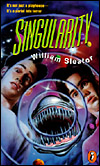 |
13
•
Singularity, 1985 trope: twin paradox Another great one, with another great title. Harry and Barry are twins. Their parents have gone on a trip and sent them to an isolated farm out on the prairie. (Missing parents!) Barry’s the dominant twin, so much so that even though they’re identical, people remark that Harry acts like he’s the little brother. When they meet a girl, Harry isn’t the one she goes for. Out on the farm is a shed. One day Barry steps inside and the door slams behind him. Harry immediately opens the door again to find Barry asleep and in need of a shave. He thinks he’s been locked in overnight. It turns out that inside the shed is a singularity which distorts time. For every second that goes by outside the shed, an hour goes by inside. One night, Harry realizes that that means that he doesn’t have to be a twin anymore. He can go live in the shed and a year will pass for him before anyone outside notices he’s missing. The only problem is: how do you live in a shed for a year? It takes discipline. Harry learns to meditate. He fasts. He exercises. He reads philosophy books. By the end of his year in the shed, he’s got the soul of a sage and the body of a Greek god. “Yeah, great,” I thought, reading this for the first time back in college. “I could do that too if I were spending a year alone in a shed.” Then I looked around the tiny single dorm room I would be living in until the following summer. Then I said “Oh.” Sleator dedicated this book to his sister Vicky. “We were never actually twins—though people sometimes thought we were—but we are just as important to each other as any twins I ever heard of.” Remember that, because it’ll be important later. |
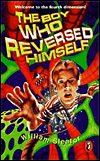 |
5
•
The Boy Who Reversed Himself, 1986 trope: fourth dimension Cosmos has a bit about Flatland, Edwin Abbott’s 1884 book about an animate and indeed genteel square in a two-dimensional world who has his perceptions radically altered by a visitor from the third dimension. Sagan went on to discuss what this tells us about how we in the third dimension would experience 4D creatures. In The Boy Who Reversed Himself, Sleator riffs on this theme. Omar can get things out of Laura’s locker without opening it, but sometimes—whoops!—they wind up with mirror writing. The book gets really abstract by the end, as the two of them wander through 4D and 5D worlds and interact with the creatures there. This book is the beginning of a ten-year span of subpar offerings by Sleator. By the end of it I had stopped following what he was up to and therefore missed his late-’90s resurgence. |
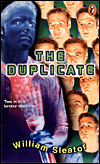 |
4
•
The Duplicate, 1988 trope: magical cloning David finds a machine that allows him to make a copy of himself so he can send the copy to grandma’s birthday party or whatever while he goes on a date. But it turns out that his clone is slightly unstable, and when the clone makes a clone, forget it. The only thing memorable about this one is that it has a nonzero amount of sexuality in it: the big fight scene at the end is prompted by the clone-of-a-clone trying to deflower David’s girlfriend. |
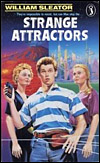 |
6
•
Strange Attractors, 1990 trope: chaos More time travel, but this time, if you change the past, you don’t change the present or the future: you leave the timeline in a chaotic mess of overlapping possibilities. One hedonistic version of the local eccentric scientist and his daughter don’t care, and cheerfully mess up the timestream. Max has to stop them even though he finds using their time travel device extremely addictive. This isn’t a great one, but it’s notable as the first time Thailand figures into one of Sleator’s books. Sleator himself moved to Bangkok around this time, and would go on to bring up Thailand almost as often as Kim Stanley Robinson compared women to dolphins. |
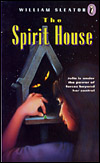 |
4
•
The Spirit House, 1991 trope: Thai spirits A Thai exchange student comes to visit the Kamen family. Julie had been expecting a nerd, but the guy who shows up is very different, older, kind of a hipster. It turns out that he’s in contact with a spirit that makes wishes come true… but someone else always suffers the consequences. It looks like this one is out of print despite Sleator’s fame, and I can’t say I’m too surprised. At this point he was really crankin’ ’em out. “Hey, I’m in Thailand, people here believe in spirits, that might make for a good book, scribble scribble scribble, ka-ching.” |
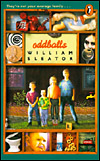 |
3
•
Oddballs, 1993 trope: memoir This is a collection of stories about the childhoods of Sleator and his siblings. The stories are often vulgar and actually lowered my opinion of Sleator just a bit—when he talks about stupid crank calls, for instance, I came away with the sense that not only did he think they were funny when he was a kid, he actually still thinks they’re funny. I noticed that the entire text of this book is up on Daniel Sleator’s web site, and that’s probably a more appropriate place for it than a bookstore. |
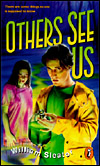 |
2
•
Oddballs, 1993 trope: telepathy Back to telepathy, but instead of it being shared by two nice kids as in Into the Dream, it is a weapon used by some very ugly people. I disliked Others See Us. People fall into a swamp a few times over the course of the book, but I felt more like I’d fallen into a sewer. Really repugnant characters. This is the last Sleator book I read before 2006. |
 |
5
•
Dangerous Wishes, 1995 trope: Thai spirits This is a sequel to The Spirit House, and while I still wasn’t all that enthralled by the Thai spirit stuff, it is better than its predecessor: Sleator finally gets his chance to write a whole book set in modern Thailand, and he does a good job of getting across what the Third World is actually like. I’ve been reading the industry reviews of these books and I keep seeing things like this quote from the School Library Journal: “Everything wraps up nice and tidy, with everyone suddenly having good luck and bright futures.” Er, excuse me? Did you even read the ending? Sleator actually very rarely goes for the unalloyed happy ending, and this is not one of those times. Sheesh. This review also complains that the parents in this book are “so blindingly ignorant about the country they are visiting”. That’s a more legitimate complaint, but, well, all of Sleator’s parents are like that. |
 |
10
•
The Night the Heads Came, 1996 trope: alien abduction Awright, now we’re talkin’. This is a decent riff on Communion-style alien abduction stories with some pretty interesting twists to it. It’s a well-told page-turner. I liked it. |
 |
5
•
The Beasties, 1997 trope: chuds This isn’t really one of my favorites—I’m more into time distortion than chuds, at least when we’re supposed to take the chuds seriously—but it has some interesting elements. There is some good sibling stuff with narrator Doug simultaneously extremely annoyed by his bookish younger sister Colette and nobly protective of her. But once again we hit the trademark Sleator reserve: would it kill a Sleator protagonist to actually express some of these feelings? Dude, when you’ve been worried sick that your sister’s been eaten by chuds and you discover to your immense relief that she’s okay, you’re actually allowed to give her a hug. It was also with this book that I realized that another one of Sleator’s motifs had been staring at me in book after book without me articulating it to myself: characters who get in trouble by doing something impulsive, even when they know it’s a bad idea. “Hey, a chud hole. These are extremely dangerous. Everyone’s been warning us about these. Going into the chud hole would be the stupidest thing we could do.” “Yeah, chud holes are incredibly dangerous. All right, let’s go in.” “Okay.” […] “Eeeagh! Chuds!” I guess this sort of thing actually is pretty representative of the decisions most teenagers make. I wasn’t one of them, but that’s me. |
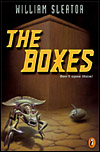 |
10
•
The Boxes, 1998 trope: aliens, time distortion, telepathy The Boxes marks Sleator’s return to top form. Nearly all his tropes are on display, but it never becomes a matter of “Cripes, this again”—he makes them work. Annie is an orphan (missing parents!) under the care of her obese, chain-smoking, television-addicted Aunt Ruth (bad guardian! crass fat woman!). One day her dashing but usually absent Uncle Marco gives her a pair of boxes with strict instructions to keep them separate and never to open them. Within a few pages, Annie has opened one (impulsive teenager!) and let out a little bug. Very soon, the bug has grown to the size of a crab, bred tremendously, and started to build a city for alien bugs in the basement. The bugs speak to Annie telepathically, not just in words, but also imparting wordless information: Annie starts to know things, can sense objects in the dark. They show her how to open the other box up in her room, which contains some sort of complicated machine, apparently an alien clock. Annie becomes the “nervous system” relaying messages between the bugs and the clock, which they consider their god and worship in the manner of rural Thais (Thailand!). So, to recap: a shy, sympathetic teenage girl who starts to develop mysterious powers and keeps an alien civilization running in her house? I’m sold! And that was before I got to the part about how the alien clock had the power to slow down time. Yee-hah. This one even has one of Sleator’s trademark romances. Girl meets boy. Girl and boy discover that they share a superpower, have harrowing adventures, save each other’s lives. Girl and boy will clearly be spending the rest of their lives together. Girl and boy consider expressing their bond with a handshake or by saying “I like you” or something but decide that might be too intimate. Sigh. |
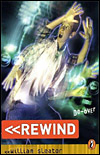 |
2
•
Rewind, 1999 trope: time loop In 1999, Sleator released two books that both told the story of a boy who has to retroactively prevent his own death by healing his family relationships. In Rewind, the problem is that his parents are not just neglectful and shallow but actively hostile to him, because he’s adopted and they’re now finally about to have a biological child of their own. After one too many bouts of psychological abuse he runs out into the road and gets himself killed. Then he finds that he’s actually allowed to redo the previous few weeks to see if he can’t prevent his own death. He does so, alas, by redoing his puppet show (yes, puppet show) so that instead of featuring monsters and aliens it deals with a family much like his own, thus allowing his parents to see how they’re tearing him apart. Yeah, it’s as bad as it sounds. It also made me worry that Sleator was announcing a new, Oprah-friendly direction by ripping his own previous work. |
 |
4
•
Boltzmon!, 1999 trope: particle physics Boltzmon! continues in this vein, but fortunately it’s closer to The Green Futures of Tycho than to Rewind. It’s actually very close to Strange Attractors in its rather silly interpretation of its topic—remember how Sleator read that “strange attractors drag systems into chaos” and oblingly wrote about strangely attractive people who do the same? Well, this time around he read that a boltzmon is a theoretical particle that, when perturbed, disappears into another universe, and responded with a book about a boltzmon that takes human form and, when faced with backtalk, shouts, “You are perturbing me!” and pops everyone into an alternate universe. And do I have to tell you that the alternate universe in this case is an awful lot like Thailand? Or that when the boy runs into the alternate-universe version of his sister, she is a fat, nasty, shallow chain-smoker? Unlike Rewind, it’s not as bad as I’m making it sound, but still, this is no The Boxes. |
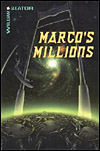 |
4
•
Marco’s Millions, 2001 trope: aliens, time distortion, telepathy …and neither is this one, even though it’s a prequel to The Boxes. More brother-sister stuff, continuing a string from The Beasties to Boltzmon! to this one and then to The Last Universe. Marco likes to travel. Unfortunately, it’s his younger sister Lilly who has been chosen to travel through an interdimensional portal in order to save several universes from a violent singularity. She’s the one with the psychic gifts. But she’s also cripplingly shy—she doesn’t really talk to anyone but Marco—and is too afraid to go on the quest. So Marco goes in her place, with telepathic assistance from Lilly. And yes, they are immeasurably dear to one another and save each other’s lives and stuff, and no, they don’t actually say “I love you” or hug or anything. This one’s interesting to me because of the sibling dynamics. The classic formula from fairy tales—and, like, King Lear and stuff—is that the two older siblings are nasty and the youngest is a sweetheart. In Marco’s Millions, the two older siblings have such a close bond that the youngest feels left out and becomes… well, she becomes Aunt Ruth. |
 |
7
•
Parasite Pig, 2002 trope: aliens This is a sequel to Interstellar Pig, and while it’s not on that level, it’s pretty good in its own right. Barney has an alien parasite in his brain. The parasite wants to lay eggs, but it can only do so in the body of a human-eating alien crab from the planet J’koot. The parasite has control over Barney’s hormones and thus subtly nudges him toward a course of action that will take him to J’koot (along with three new Interstellar Pig players, two of whom turn out to be aliens themselves) and get him eaten. There’s a lot to like about this one. I mean, if you’re writing for kids in junior high school, what could possibly hit home more than the idea of strange hormones making you do things that rationally you know aren’t in your best interest? Parasite Pig makes explicit the “impulsive teenager” meme of some of Sleator’s other works. Not that this kind of behavior is exclusive to teenagers! A running theme through the book is the drive to reproduce. The brain parasite that drives the plot and gives Barney all these strange urges is itself motivated by the urge to lay eggs. One of the other aliens, a sort of wasp, is also looking to lay some eggs of its own, but it’s less picky: it doesn’t need a particular species, but whatever organism it picks will be eaten alive from the inside and die in agony. And it occurred to me that Sleator missed out on a prime opportunity to complete the circle here. See, when Barney and the other human player, Katie, land on J’koot, the crabs try to fatten them up like Hansel and Gretel so they’ll be tastier to eat. Barney, prompted by the parasite who wants him to get eaten, chows down like a maniac. Katie, realizing that staying thin is all that will keep her alive, refrains. It was obvious to me what the next plot development should be: Barney should try to impregnate Katie in order to fatten her up. That parasite should have had Barney doing everything in his power to bed Katie! And the especially fun part is the fact that in real life, we don’t need brain parasites driving us to try to impregnate each other — it’s actually very uncanny to sort of mentally sit back and observe how your body rewards you for getting closer to this goal. It is a shame that, whether because of skittishness from the publisher or because of Sleator’s own reserve, this angle didn’t get explored. |
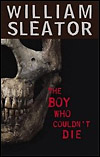 |
3
•
The Boy Who Couldn’t Die, 2004 trope: zombies Ken’s friend Roger has just died in a plane crash. Ken goes to a voodoo priestess who performs a ritual that makes him invulnerable to harm. Yay! But wait, the reason he’s invulnerable to harm is that he’s a zombie who does her bidding at night! Boo! This one was not my thing. Caribbean superstition is no more interesting to me than Thai superstition is. |
 |
13
•
The Last Universe, 2005 trope: Schrödinger’s cat You will remember that twenty years before this book came out, Sleator had dedicated a book, Singularity, to his sister Vicky. The Last Universe is also dedicated to Vicky. But this time it says (1946–2003) after her name. Susan has never really been close with her older brother Gary. He was a popular jock and never had time for his little sister. But now Gary is dying of leukemia. He’s confined to a wheelchair. Susan has to push him around when he wants to go anywhere. She’s not thrilled about it, but she doesn’t complain too much. Yes, she’s a moody fourteen-year-old, but she still has, y’know, a soul. She’s not going to refuse her dying brother. Gary mostly wants to be pushed around their ten-acre garden. It’s a very strange place. Designed by their great-uncle, a world-renowned scientific genius, it has some unusual properties. Sometimes you’ll follow the path and find it taking you somewhere it just doesn’t normally go. Strange tropical plants pop up that just don’t grow in New England. And when Susan and Gary go into the hedge maze, they see other versions of themselves darting around the corners. The first book I ever wrote about for my web site was Tom’s Midnight Garden. Here is an American sci-fi take on the concept. Gary and Susan’s garden isn’t just generically magical. It’s quantum. All the possible universes meet here, those in which Gary will live and those in which Gary will die. And Gary’s only chance at life is for Susan to lead him to a universe where he isn’t dying. Sometimes they seem to be on the right track and he feels a little bit stronger—though it’s disconcerting to find that other things are different, too, be they vases or people’s personalities. Sometimes they find themselves in universes where Gary is much worse off and Susan has to get him out before he dies. And sometimes things are more different still. This is a very well-written YA novel. But the dedication makes it more than that. Years earlier, Sleator might have said, “Hmm, haven’t written a Schrödinger’s cat book yet—that might be fun!” and dashed off an amusing trifle. Wikipedia has a whole section devoted to Schrödinger’s cat jokes. But when your sister dies, the idea of other universes in which she is alive is no longer very funny. It takes on no small amount of emotional urgency. Or at least, that’s my experience, and I know a little bit about this. So The Last Universe isn’t a funny book. Though Gary and Susan are as reserved as any other Sleator characters, it is heartbreaking—all the more so because of the SF trappings that keep it from becoming glurge. Though to be perfectly honest, the glurge works for me too. In fact, with the last chapter of this book, William Sleator, of all people, made me cry. |
And that makes 25. Welcome back to 2012. Let the addenda commence!
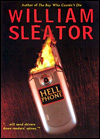 |
4
•
Hell Phone, 2006 trope: hell (also, phone) Like The Green Futures of Tycho with its egg, or Interstellar Pig with its Piggy, or Strange Attractors with its phasers, or really pretty much any book on the list above, Hell Phone is about a kid who gets hold of a sinister artifact and desperately tries to hang onto it even as he sees that it’s destroying his life. The book is full of moments when the protagonist says that he knows he should get rid of the titular infernal telecommunication device but that he has a strange compulsion to hang onto it, as a way of explaining the illogic of his actions. In fact, a lot of the book seems to be an exercise in fending off “Why don’t you just…?” questions: the phone is crippled in various ways (“Why don’t you just screen your calls?” “Why don’t you just turn off the phone?” “Why don’t you just send a text?”), and the protagonist is extremely poor and has no car (“Why don’t you just buy a…?” “Why don’t you just go to…?”). It’s kind of awkward. The other awkward thing about Hell Phone is that hell, as I understand it, is supposed to be a place of unimaginable torment, and yet portraying it as literally as Hell Phone does forces the author to imagine it—and, in so doing, shows how trivial the very concept is. Hell is a place where people are subjected to head-meltingly agonizing tortures!! …you mean, like in pretty much every culture in human history? It’s all smoggy and smells like shit!! …you mean, like the places most people on earth live in? (More on this theme here.) |
 |
4
•
Test, 2008 trope: dystopia I was optimistic when I started this one, as it quickly became clear that, for the first time since House of Stairs, this wouldn’t be about some modern-day kid having a brush with the supernatural, or getting hold of some futuristic device, but rather about plausible events in a near-future world. In Test, the rich have grown much richer and the poor have grown much poorer. (Who could’ve imagined?) The masses live in giant projects run by corporate slumlords, while those who can manage a small apartment and a car sit in traffic for four hours each way. The ticket to avoid ending up trapped in the projects is a college degree, but public school students can’t even get a high school diploma without passing a test called the XCAS. Teachers’ and administrators’ jobs depend on their students’ XCAS pass rate, so classes become exercises in “teaching to the test”. The rich, by contrast, get around in private helicopters, and their young ones go to private schools and don’t need to take the XCAS at all. It seemed like a promising enough set-up, but what Sleator does with it isn’t very interesting. Will there be a substitute teacher who assigns the public school kids a real story—a science fiction story, say—and thereby introduces the jaded youngsters to the wonders of reading? Will there be a whip-smart foreign student—perhaps from, oh, how about Thailand—who is in danger of failing the XCAS? Spoilers: yes. Also, the teenage heroine will be bland and pretty, while her opposite number, the big villain’s spoiled daughter, will be ugly, stupid, bulimic, and flat-chested. And it will turn out that the secret to fixing the educational system is for the students at one school to boycott the test and walk around with picket signs saying “No Child Left Behind = Never Cripple Lollipop Bambis”, because it will demonstrate to the public how absurd high-stakes testing is. (Thus confirming that, yes, Sleator did indeed think that the, er, “humor” in Oddballs was still funny.) |
 |
4
•
The Phantom Limb, 2011
(with Ann Monticone) trope: magic mirrors This time the artifact is one of those mirror boxes that have been shown to relieve the pain amputees feel in their missing appendages. But for once it isn’t evil, or even a temptation to do evil—it is possessed by the amputated arm of a kid who fell prey to a sociopathic nurse. Said nurse now wants to chop off the arm of the protagonist’s mother, and the arm in the mirror is the protagonist’s chief ally in stopping her. This is pretty hackish. It seems like the work of someone who read some articles on Wikipedia (about mirror boxes, optical illusions, and the Macdonald triad) and then threw together a story about them while waiting for a bus. Or, given the credits, had his assistant do so. |
And thus I am afraid that this article no longer ends on a high note. But we tend to remember artists for the greatest achivements in their body of work rather than the entire corpus, and I’d say that House of Stairs, Interstellar Pig, Singularity, and The Last Universe constitute an impressive enough legacy that the various misfires in the list above don’t tarnish it very much.
 |
 |
 |
 |
||
|---|---|---|---|---|---|
Tumblr |
this site |
Calendar page |
|||